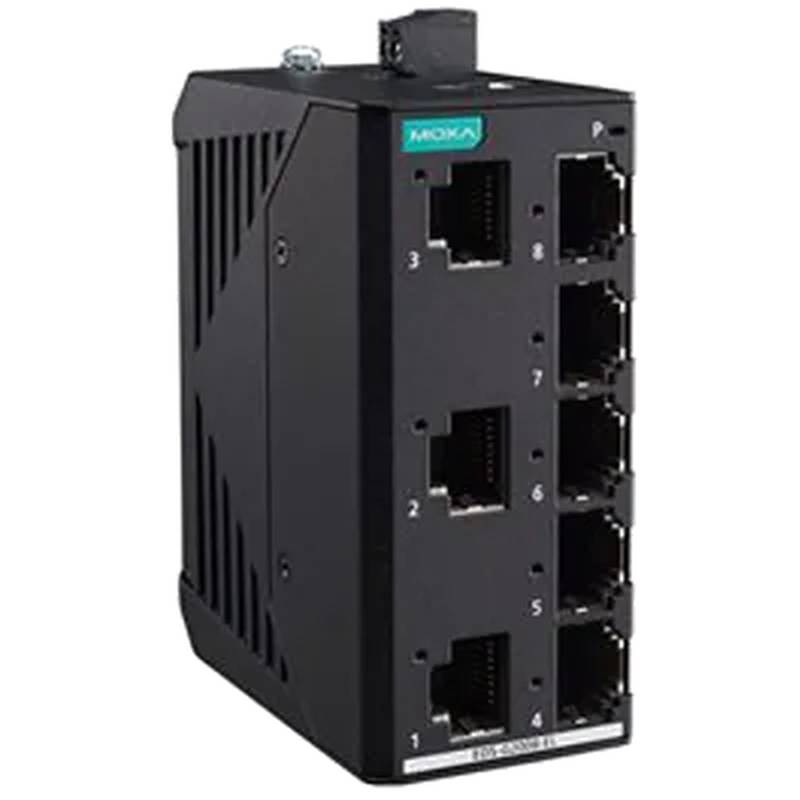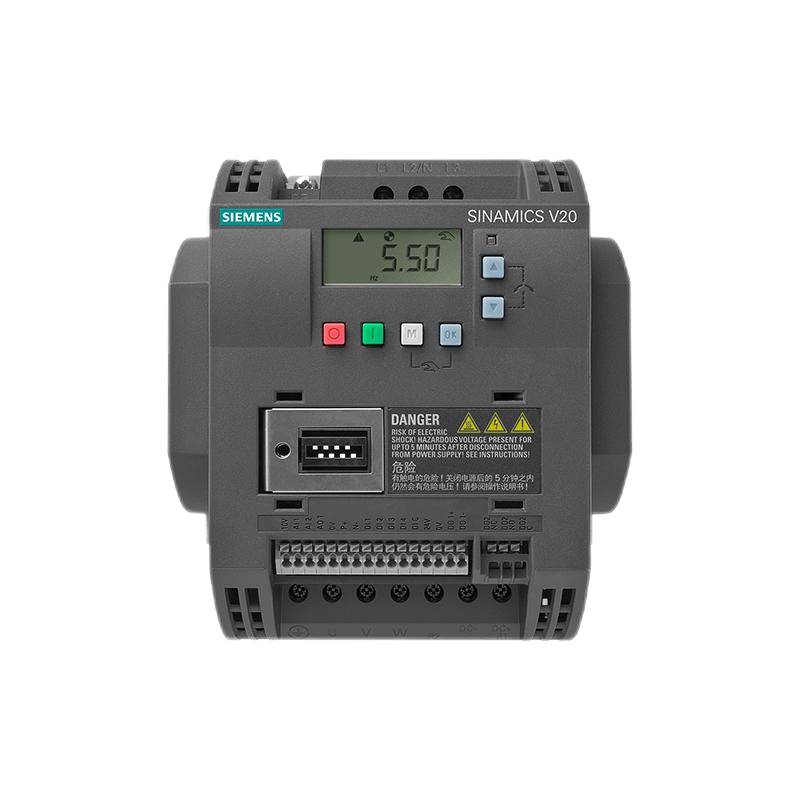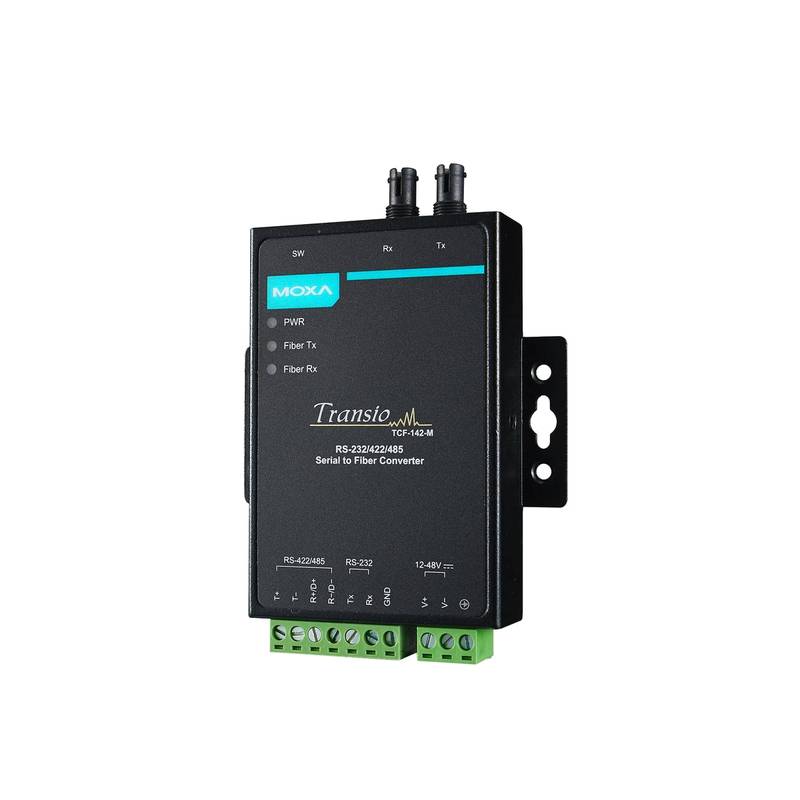
The Siemens 5SN6113-8CN is a single-pole, 13-amp miniature circuit breaker (MCB) designed for robust protection in electrical installations. Engineered with a high breaking capacity, this device offers superior safety and reliability, making it a critical component for safeguarding circuits against overcurrents and short circuits. Its advanced tripping characteristics ensure rapid disconnection, minimizing damage to connected equipment and preventing potential hazards. The 5SN6113-8CN MCB is characterized by its compact design, ease of installation, and compliance with stringent international standards, positioning it as a premier choice for both new constructions and system upgrades in residential, commercial, and industrial settings.
Siemens 5SN6113-8CN Product Specifications
| Parameter | Specification |
| :------------------------- | :------------------------------------- |
| Product Type | Miniature Circuit Breaker (MCB) |
| Pole Configuration | 1-Pole (Single Pole) |
| Rated Current (In) | 13 A |
| Breaking Capacity (Icn) | 6 kA (kA = Kiloampere) |
| Tripping Characteristic | Type C |
| Rated Voltage (Un) | 230/400 V AC |
| Frequency | 50/60 Hz |
| Mounting Type | DIN Rail (35mm standard) |
| Degree of Protection | IP20 (Finger-safe terminals) |
| Operating Temperature | -25°C to +55°C |
| Standards Compliance | IEC/EN 60898-1, IEC/EN 60947-2 |
| Electrical Endurance | > 4,000 switching cycles |
| Mechanical Endurance | > 20,000 switching cycles |
| Terminal Type | Screw Terminals |
| Wire Size Compatibility | Up to 16 mm² (rigid), 10 mm² (flexible)|
Core Features & Market Positioning
The Siemens 5SN6113-8CN MCB distinguishes itself through its robust construction and high breaking capacity of 6kA, providing a superior level of protection against severe short-circuit events that might overwhelm standard breakers. Its Type C tripping characteristic is engineered to accommodate moderate inrush currents from inductive loads, such as motors, without nuisance tripping, while still offering swift protection against short circuits. This combination of rapid fault clearing and tolerance for temporary overcurrents positions the 5SN6113-8CN as a reliable and versatile solution for applications demanding dependable circuit protection. Siemens' reputation for quality and innovation further solidifies its market standing, ensuring users receive a product backed by decades of electrical engineering expertise.
Key Application Scenarios
This 1-pole, 13A MCB is ideally suited for protecting individual circuits in residential distribution boards, safeguarding lighting circuits, and protecting standard socket outlets that may power appliances with moderate startup surges. In commercial environments, the Siemens 5SN6113-8CN finds application in sub-distribution panels for office spaces, retail outlets, and common areas, ensuring the safety of power supplies for essential equipment and general lighting. For light industrial uses, it can be employed for controlling and protecting smaller motor loads or ancillary circuits where precise and reliable overcurrent protection is paramount, such as in control panels or machinery power feeds.
Practical System Integration Guidance
Integrating the Siemens 5SN6113-8CN into existing electrical systems is straightforward due to its standard 35mm DIN rail mounting. Ensure the incoming power supply (line) is connected to the top terminal and the outgoing load to the bottom terminal; reversing this connection can impair proper operation. The MCB supports both rigid and flexible conductors up to 16 mm² and 10 mm² respectively, requiring appropriate termination techniques such as crimping ferrules for flexible wires to ensure secure and reliable connections. Always verify that the circuit's anticipated load current is well below the breaker's 13A rating and that the installed breaker's breaking capacity (6kA) is sufficient for the prospective fault current at the point of installation.
Operation and Risk Mitigation
The Siemens 5SN6113-8CN operates automatically, interrupting the circuit when current exceeds its rated limit due to overload or a short circuit. Operators should only reset a tripped breaker after identifying and rectifying the cause of the fault; repeatedly resetting without addressing the underlying issue can indicate a persistent problem or equipment malfunction. The IP20 rating signifies protection against solid objects larger than 12.5mm and is not intended for use in environments where dust or moisture ingress is a concern. Always ensure the breaker is de-energized before performing any maintenance or inspection work on connected wiring to prevent electric shock.
Scalability & Long-Term Value
As part of Siemens' comprehensive portfolio of circuit protection devices, the 5SN6113-8CN offers excellent compatibility with other Siemens components, facilitating seamless integration into larger distribution systems or future upgrades. Its robust design and adherence to international standards ensure a long operational lifespan, reducing the need for frequent replacements and contributing to the overall reliability and cost-effectiveness of the electrical installation. While this specific model focuses on essential circuit protection, it aligns with Siemens' broader commitment to smart grid technologies and digital solutions, laying a foundation for potential future integration with monitoring systems if required in subsequent project phases.
Frequently Asked Questions (FAQs)
1. What is the breaking capacity of the Siemens 5SN6113-8CN?
The Siemens 5SN6113-8CN features a high breaking capacity of 6 kA. This rating signifies the maximum fault current the circuit breaker can safely interrupt without sustaining damage. It is crucial for ensuring protection against severe short-circuit events.
This 6kA rating makes the MCB suitable for many residential and commercial applications. It indicates the breaker's ability to rapidly and safely disconnect power during fault conditions. Understanding this parameter is key to selecting appropriate protection for an electrical system.
A higher breaking capacity provides a greater margin of safety. It ensures the breaker will reliably operate even in scenarios with significant potential fault currents. This is essential for preventing equipment damage and ensuring personnel safety.
2. What type of tripping characteristic does this MCB have?
This Siemens circuit breaker utilizes a Type C tripping characteristic. Type C breakers are designed to handle moderate inrush currents common with inductive loads. This prevents nuisance tripping during normal equipment startup.
Inductive loads, such as motors or transformers, draw higher current for a brief period when initially powered on. The Type C curve allows for these temporary surges while still protecting against damaging short circuits. It offers a balance for many common applications.
For applications with very high inrush currents, such as large motors or specialized equipment, a Type D characteristic might be considered. However, Type C is a versatile choice for general-purpose use in many residential and commercial settings.
3. Can the Siemens 5SN6113-8CN be used in industrial environments?
Yes, the Siemens 5SN6113-8CN can be utilized in certain industrial applications, particularly for controlling and protecting lighter loads or ancillary circuits. Its 6kA breaking capacity offers a solid level of protection for circuits where fault currents are not expected to exceed this threshold. It is commonly found in control panels for machinery or for powering auxiliary equipment.
The Type C tripping characteristic is advantageous in industrial settings where motors and other inductive equipment are prevalent. This feature helps prevent unnecessary shutdowns due to inrush currents, contributing to smoother operation. However, for heavy industrial machinery with very high fault currents, breakers with higher breaking capacities (e.g., 10kA or 15kA) and different tripping curves might be necessary.
When considering its use in industrial environments, a thorough electrical system analysis is recommended. This analysis should evaluate the prospective fault current at the point of installation and the nature of the connected loads to ensure the 5SN6113-8CN is the most appropriate protective device.
4. What is the maximum wire size that can be connected to this breaker?
The Siemens 5SN6113-8CN accommodates rigid conductors up to 16 mm² (square millimeters). For flexible conductors, the maximum size is 10 mm². It is important to use appropriately sized conductors that match the breaker's rating and the circuit's load requirements.
Using the correct wire size is critical for safety and performance. Undersized wires can overheat and pose a fire risk, while oversized wires may not be cost-effective. The terminal design of the 5SN6113-8CN ensures a secure connection for these conductor sizes.
For reliable termination of flexible conductors, it is strongly recommended to use ferrules. Ferrules consolidate the wire strands, providing a more robust and consistent connection within the terminal block, minimizing the risk of loose connections and intermittent faults.
5. How do I install the Siemens 5SN6113-8CN?
Installation involves snapping the MCB onto a standard 35mm DIN rail within an appropriate enclosure. Ensure the circuit is de-energized before commencing any work. Connect the incoming power supply (line wire) to the upper terminal and the outgoing circuit (load wire) to the lower terminal.
A secure connection is vital for the breaker's proper functioning and safety. Use the screw terminals to firmly attach the conductors, ensuring no stray strands are present. For flexible wires, crimp on appropriate size ferrules before insertion into the terminals for optimal contact.
After installation and wiring, double-check all connections for tightness and correctness. Restore power to the circuit and test the breaker's operation, including its trip mechanism, to confirm it is functioning as expected according to safety protocols.
6. What does "1P" signify for this circuit breaker?
"1P" stands for single-pole, meaning the circuit breaker is designed to protect and switch a single electrical conductor (phase). It is typically used for single-phase circuits where only the live (phase) wire needs to be interrupted for isolation and protection.
Single-pole breakers are common in residential and light commercial applications for protecting individual circuits like lighting, outlets, or small appliances. They do not interrupt the neutral conductor. This is a standard configuration for many power distribution systems.
When installing a 1P breaker, it is crucial to connect it to the phase conductor. The neutral conductor usually bypasses the breaker and connects directly to the neutral busbar, though specific wiring configurations can vary based on local electrical codes and system design.
7. What does the "13A" rating mean for this MCB?
The "13A" indicates the nominal rated current of the circuit breaker. This is the maximum continuous current the breaker can carry without tripping under normal operating conditions. It is important to match this rating to the load requirements of the circuit it protects.
If the current flowing through the breaker consistently exceeds 13A for an extended period, the internal tripping mechanism will activate, interrupting the circuit. This protects the wiring and connected equipment from damage due to overloads. It also acts as a safety feature to prevent overheating and potential fires.
Selecting the correct amperage rating is crucial. A 13A breaker is suitable for circuits with loads drawing up to this limit. For circuits with higher current demands, a breaker with a higher amperage rating (e.g., 16A, 20A) would be necessary, provided the wiring is also appropriately sized.
8. What are the implications of the IEC/EN 60898-1 and IEC/EN 60947-2 compliance?
Compliance with IEC/EN 60898-1 signifies that the circuit breaker meets the stringent safety and performance requirements for residential and similar applications. It ensures reliable protection against overcurrents for general-purpose circuits. This standard is widely recognized globally for consumer-level electrical safety.
Adherence to IEC/EN 60947-2 indicates that the MCB also meets standards for low-voltage switchgear and controlgear in industrial and commercial environments. This dual certification confirms its robustness and suitability for a broader range of demanding applications beyond typical domestic use. It guarantees a higher level of protection and durability.
These certifications assure users that the Siemens 5SN6113-8CN has undergone rigorous testing and meets international benchmarks for safety, reliability, and performance. This provides confidence in its ability to protect electrical installations effectively in various settings.
9. How does the Type C tripping characteristic protect against different fault types?
The Type C tripping characteristic is primarily designed to provide effective protection against short-circuit faults. In the event of a short circuit, the current rises extremely rapidly, and the Type C MCB will trip almost instantaneously to clear the fault. This rapid disconnection is crucial for preventing damage and hazards associated with short circuits.
For overcurrent faults, which are typically caused by overloads and result in a gradual increase in current, the Type C breaker will trip after a short delay. This delay allows for temporary inrush currents from inductive loads, such as motor starts, without causing the breaker to trip unnecessarily. It differentiates between temporary surges and sustained overloads.
While Type C offers good protection against both short circuits and overloads, it's important to note its specific inrush current tolerance. For circuits with very high or prolonged inrush currents, other tripping characteristics like Type D might be more appropriate to avoid nuisance tripping.
10. Is this MCB suitable for use with residual current devices (RCDs)?
Yes, the Siemens 5SN6113-8CN MCB is designed to be compatible with residual current devices (RCDs) or residual current circuit breakers with overload protection (RCBOs). It can be installed downstream of an RCD or as part of an RCBO unit, where the RCD provides protection against earth leakage faults.
When used in conjunction with an RCD, the MCB handles overcurrent and short-circuit protection, while the RCD detects small imbalances in current between the live and neutral conductors, indicating a potential shock hazard or earth fault. This combination offers a comprehensive safety solution.
For optimal system design, it is recommended to select RCDs and MCBs that are specifically designed to work together, often from the same manufacturer like Siemens. This ensures seamless integration and reliable performance, providing enhanced protection against electrical hazards in various installations.
























